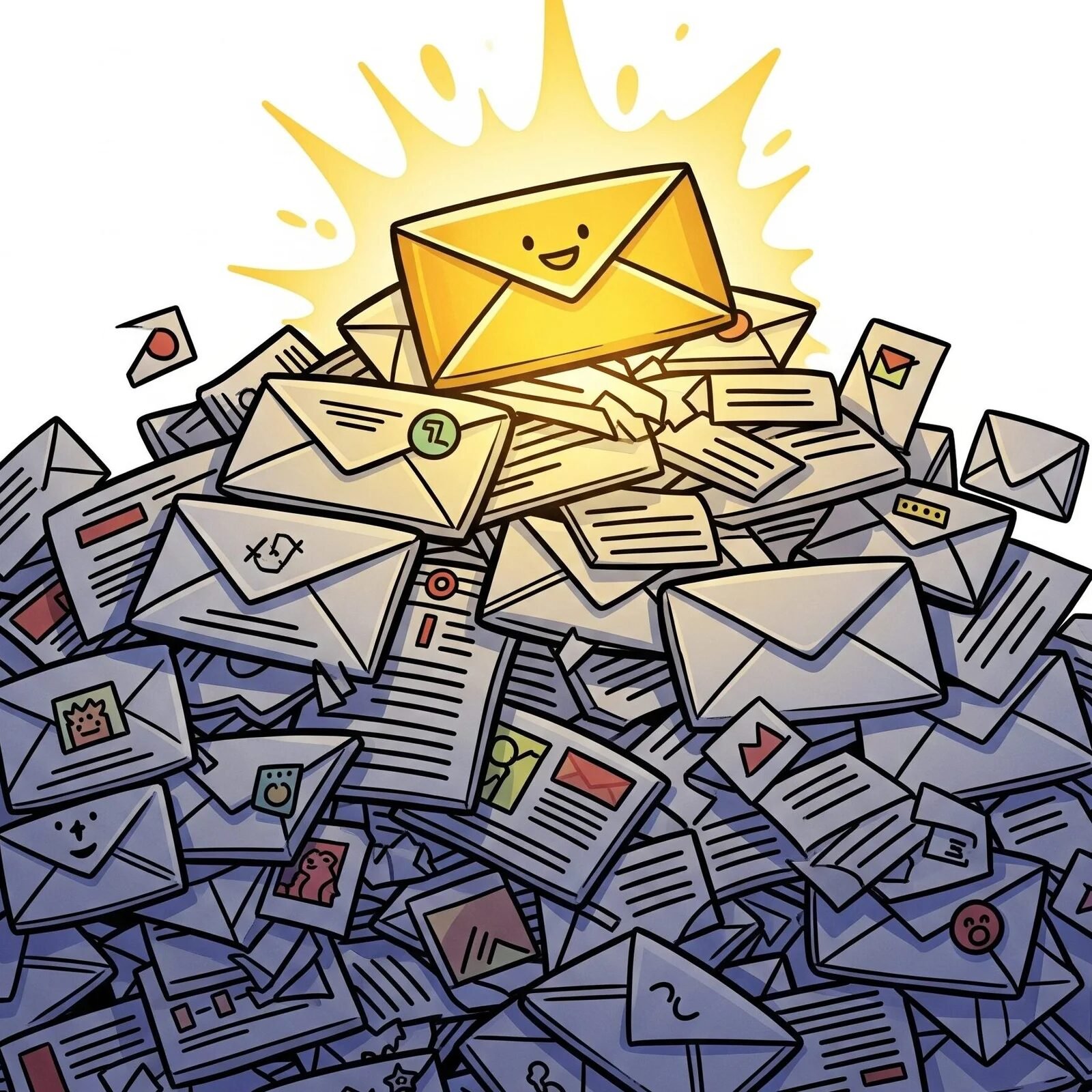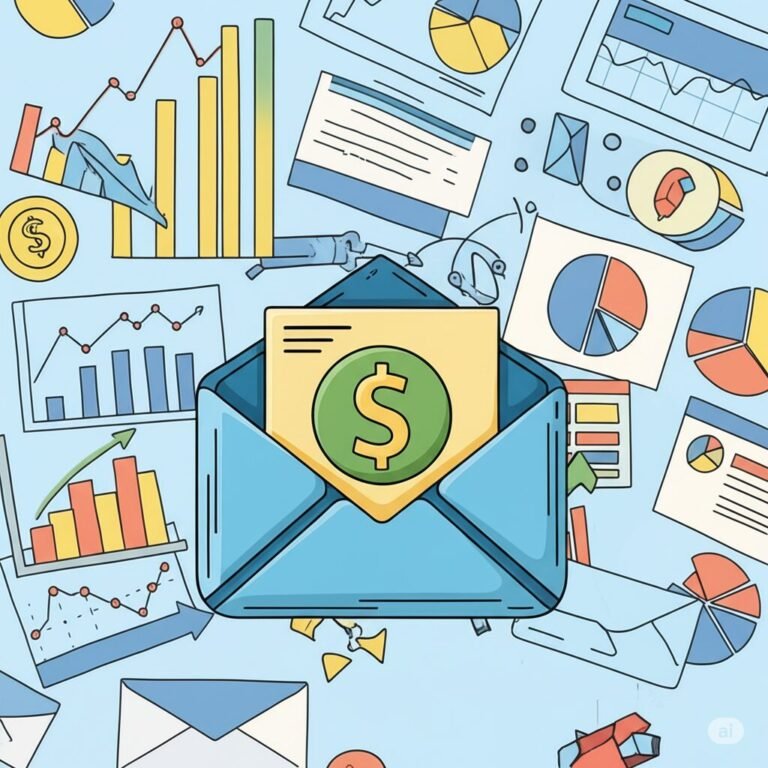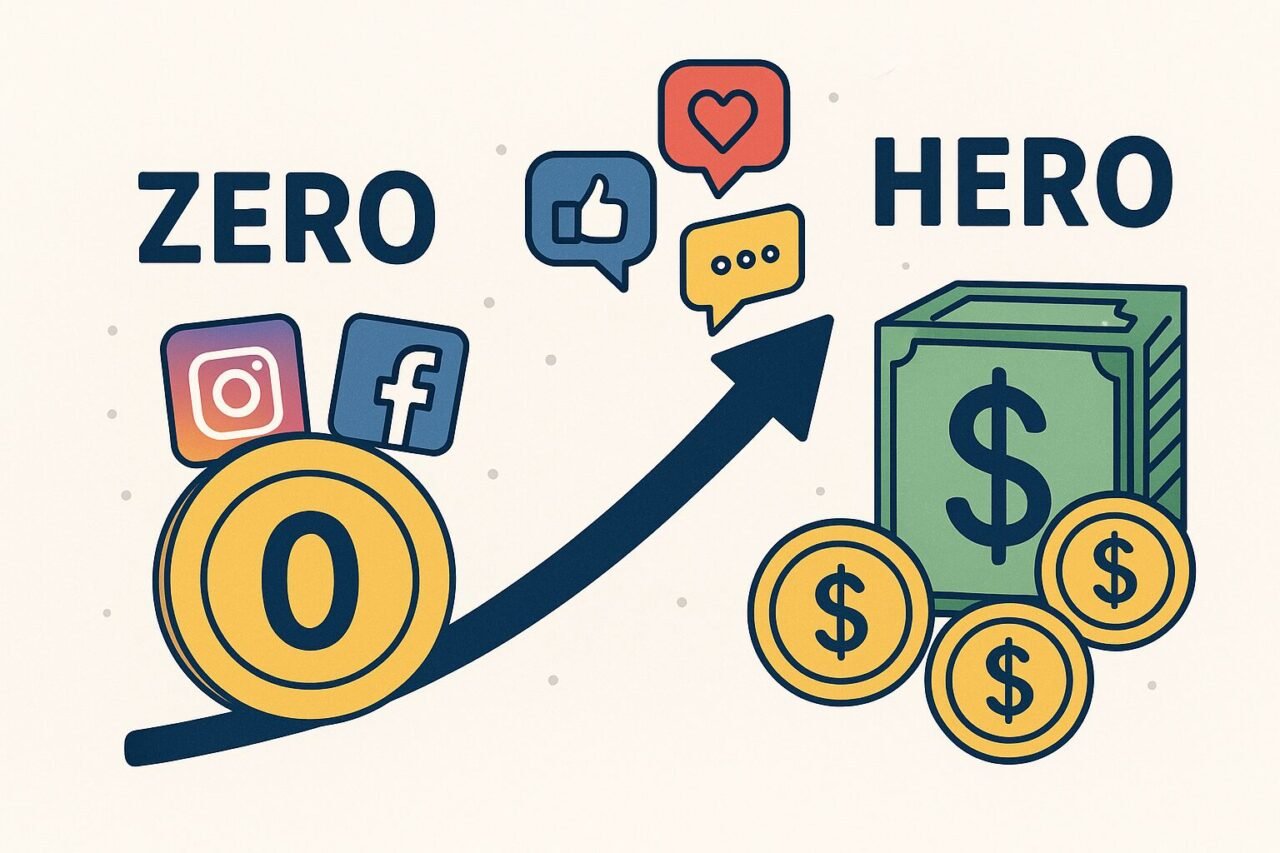Overview
As a consultant specializing in growth strategies for financial technology firms, I am currently working with a dynamic fintech investment firm. My focus is on identifying and implementing innovative approaches to client acquisition and engagement. A critical area of exploration has been the optimization of cold email campaigns, a channel often underestimated yet possessing immense potential for targeted lead generation within the sophisticated world of financial services. This case study details my deep dive over the past three months into building and refining a robust cold email strategy, from technology selection to execution and analysis, demonstrating a hands-on approach to achieving tangible results.

A PM’s Perspective on Cold Emailing CRM’s
From a Product Management standpoint, the decision to leverage a cold emailing CRM and the strategies outlined in this case study extends beyond mere tactical execution; it’s a strategic imperative. While the notion of building a community around a product or service is often championed as the ethically superior and sustainable long-term play, it’s not always a justifiable path, particularly for firms that lack the multi-billion dollar marketing budgets of established competitors. Community building is a marathon, demanding significant time, resources, and continuous nurturing – luxuries often unavailable to leaner operations or firms in highly competitive, transaction-oriented markets like fintech.
In such environments, where direct client acquisition is paramount, the ethical considerations of cold emailing must be weighed against the stark realities of market competition. While some may view cold outreach as aggressive or unsolicited, the data consistently shows that when executed with precision, personalization, and a focus on genuine value (as demonstrated by our results), it remains an incredibly effective channel. To ignore a strategy with a proven track record of strong conversions would, quite frankly, be shortsighted.
Entrepreneurship is undeniably a wonderful and rewarding career path, but we cannot afford to kid ourselves; it is also fiercely competitive and often brutal. It’s truly a place where the strong thrive and the weak perish. In this arena, every legitimate competitive edge must be seized. To assume that your competitors, especially those with larger resources, aren’t already employing sophisticated cold outreach strategies to generate leads would be naive. Therefore, for firms navigating a competitive landscape without the luxury of infinite marketing spend, a well-managed cold emailing CRM isn’t just a tool; it’s a strategic weapon. It enables targeted, scalable outreach that levels the playing field, allowing businesses to proactively engage with potential clients and carve out their niche. Leveraging such a system is less about a moral dilemma and more about pragmatism and survival in a marketplace that rewards initiative and efficiency. It’s about taking advantage of every ethical and effective means available to ensure growth and secure a position among the strongest players. This case study, then, serves to illuminate precisely how this strategic competitive advantage can be built and optimized.
Case Study Objective
The primary objective of this case study is to illuminate the intricate process of building a high-performing cold email campaign from the ground up, specifically tailored for the fintech investment sector. This involves a comprehensive analysis of the best cold emailing CRM platforms, the development of effective sequence and cadence strategies, and a transparent review of the results achieved. My aim is to demonstrate a systematic, data-driven approach to cold outreach, showcasing the strategic thinking and practical implementation required to convert cold leads into valuable opportunities.
CRM’s… CRM’s Everywhere!
The foundation of any successful cold email campaign lies in selecting the right CRM. My evaluation of the market focused on features crucial for targeted outreach, personalization, deliverability, and scalability. Here’s a breakdown of the leading platforms and my rationale for considering them:
- Lemlist: Highly regarded for its hyper-personalization capabilities, including personalized images and videos, and strong deliverability features like email warm-up (lemwarm) and inbox rotation. Its focus on multi-channel outreach (including LinkedIn) makes it a versatile choice for a comprehensive strategy.
- Woodpecker: An excellent option for SMBs and sales teams seeking automated follow-ups and solid CRM integration. It excels in deliverability with features like email validation and warm-up. Its ease of use and campaign management make it appealing for streamlined operations.
- Reply.io: A comprehensive sales engagement platform that combines cold emailing with multi-channel outreach. Its AI-powered suggestions for email crafting and robust analytics are significant advantages. It’s suitable for teams looking for an all-in-one solution.
- Instantly.ai: A relatively new but impactful player, known for its user-friendliness and focus on deliverability and scalability, particularly for agencies managing multiple campaigns.
- Apollo.io: Offers a strong B2B lead database, AI writing assistants for personalization, and features like email warm-up and inbox rotation. While not as comprehensive in personalization as Lemlist, its lead database is a significant asset.
- Saleshandy.ai: A robust, all-in-one cold email platform gaining traction for its strong deliverability features (including a deliverability suite and email warm-up), AI variants for email generation, and excellent reporting. Saleshandy also offers a substantial B2B lead database and unlimited email accounts even on its starter plans, making it highly scalable and cost-efficient, particularly for agencies. Its user-friendly interface and focus purely on cold email make it a compelling choice.
- Smartlead.ai: Known for its premium deliverability infrastructure, including unique IP servers and advanced warm-up features with AI conversations. Smartlead.ai stands out for its unlimited mailboxes and warm-ups, emphasizing high-volume sending without compromising inbox placement. It offers a unified inbox for streamlined reply management and robust automation capabilities, making it ideal for scalable outreach.
For this specific fintech investment firm, the key considerations were data accuracy, advanced personalization to build trust, and robust deliverability to ensure high inbox placement. After thorough consideration, we opted for Instantly.ai. Our decision was driven by two key factors:
- Top-N otch AI Integrations and Customization: Instantly.ai’s AI capabilities are exceptional. The platform offers a level of customization and AI integration that allows for the creation of simple, yet incredibly impactful campaigns, making it truly second to none in this regard. This enables us to craft highly refined and effective outreach at scale.
- Superior User Experience and Community: Instantly.ai has fostered an outstanding user experience coupled with a vibrant and highly engaged community. The ability to communicate directly with other industry experts who have achieved incredible results, and to bounce new ideas off a network of seasoned professionals, is an invaluable asset, even for those with extensive CRM experience. This collaborative environment continuously fuels our strategic thinking and campaign optimization.
System Setup and Inbox Management
Beyond choosing the right CRM, the underlying technical setup and ongoing management of email accounts are paramount for sustainable cold outreach success. Neglecting these foundational elements can quickly lead to deliverability issues, wasted effort, and potential damage to domain reputation.
Inbox Volume Strategy: A critical best practice is to cap the sending volume per individual inbox. Realistically, an inbox should never exceed more than 50 cold emails being sent out per day. This conservative approach is vital for two primary reasons:
- Spam Protection: Email service providers (ESPs) actively monitor sending patterns. A sudden surge of outgoing emails from a new or infrequently used inbox is a massive red flag, almost guaranteeing a trip to the spam folder. Keeping volume low mimics natural human sending behavior.
- Damage Control: In the inevitable event that an inbox or associated domain is flagged for spam (a “burned” inbox), limiting the volume sent from that specific account minimizes the overall impact on your campaign. Losing an inbox sending 50 emails a day is far less damaging than losing one sending 200+. This strategy ensures that your entire outreach effort isn’t jeopardized by a single issue.
Domains Per Inbox Strategy: Another key element is the careful allocation of domains to each sending inbox. We aim for a ratio of around 3-5 domains per inbox. The logic here is similar to inbox volume:
- Diversification and Mitigation: Attaching too many domains to a single inbox concentrates risk. If one domain associated with an inbox gets blocked or marked for spam, it can negatively impact all other domains linked to that same sending infrastructure. Keeping the number between 3-5 provides a good balance of efficiency and risk mitigation.
- Minimizing Collateral Damage: While the goal is to avoid domain blocks or spam flags altogether, the eventuality of these issues occurring sooner or later is a realistic consideration in aggressive outreach. By having a limited number of domains per inbox, the “blast radius” of any reputation hit is contained, allowing for faster recovery and continued operations with other unaffected domains.
Priming Your Accounts (Email Warm-up): Using fresh, unprimed email accounts for cold outreach is a recipe for disaster. ESPs are highly suspicious of new accounts suddenly sending out a large volume of emails. This is where the concept of “priming” or “warming up” accounts becomes paramount.
Why Prime Accounts? The objective of priming is simple: to spoof email communications and make the new inbox appear as a legitimate, active user over a period of time. We want to avoid using fresh emails because they immediately arouse suspicion from sophisticated spam detection systems.
The Priming Process (2-4 Weeks): A warm-up period of 2-4 weeks is essential to mature an inbox and establish an average, natural interaction volume. During this time, the email account should:
- Send and Receive Emails: Gradually increase the volume of emails sent and received to other “warm” inboxes.
- Engage in Conversations: Participate in simulated conversations, replying to emails, and even having emails replied to.
- Avoid Spammy Content: Do not send any promotional content or attempt cold outreach during the warm-up phase.
- Gradual Increase: Start with very low volumes (e.g., 5-10 emails a day) and incrementally increase them over the weeks.
This process allows the inbox to build a positive sending reputation with ESPs, mimicking the activity of a real person. By the time the inbox is ready for cold outreach, it possesses a “history” that makes it less likely to be flagged as spam, significantly increasing the chances of your valuable emails actually reaching the inboxes of your target audience.
Sequence and Cadence Strategy
The “how” of cold emailing is as crucial as the “what.” Our sequence and cadence strategy was meticulously designed to nurture prospects, build rapport, and drive engagement without being intrusive. We adhered to the following best practices:
- Targeted Audience Segmentation: Before any email was sent, we segmented our prospect list based on specific criteria relevant to fintech investment (e.g., AUM, investment focus, company size, recent news). This allowed for highly tailored messaging.
- Multi-Touchpoint Approach: While the core was email, we integrated other channels where appropriate (e.g., LinkedIn connection requests, follow-ups after industry events). This multi-channel approach increased visibility and provided alternative engagement points.
- Short, Value-Driven Emails with No Links: Each email was crafted to be concise, typically 3-4 short paragraphs, focusing on a single, clear value proposition. A critical rule enforced was the absence of any links within the cold email sequence. Links significantly increase the risk of being flagged as spam and not reaching the inbox. The goal was to pique curiosity and provide immediate relevance using clean, easy language.
- Strategic Follow-Up Cadence:
- Email 1 (Initial Outreach): Focused on a personalized introduction, a specific observation related to the prospect or their firm, and a clear, low-friction call-to-action (CTA) – often a simple question to gauge interest rather than pushing for a meeting immediately.
- Good Opening Examples:
- “Came across your work at [Company Name] in [Industry/Specific Project] and was particularly impressed by [Specific Achievement/Insight].”
- “Noticed your recent [Article/Post/Event Attendance] on [Topic] – your perspective on [Specific Point] resonated with me.”
- “As a consultant focused on [Your Area of Expertise] for firms like yours, I often see [Common Problem they face].”
- Pointers for Impactful Statements: Make it immediately relevant to them. Show you’ve done your homework. Lead with value or a shared observation, not a sales pitch.
- Good Opening Examples:
- Email 2 (Value Proposition/Social Proof – 3 days after E1): If no reply, this email reiterated value, often incorporating a relevant case study or a quantifiable success metric. The aim was to build credibility through narrative, without including direct links.
- Good Opening Examples:
- “Just a quick follow-up to my previous email. I thought of [Specific Industry Trend/Challenge] and how it might be impacting [Their Company/Role].”
- “In my experience working with [Similar Type of Company], they often struggle with [Problem], which is why we focus on [Your Solution Benefit].”
- Pointers for Impactful Statements: Connect your solution to their potential pain points or aspirations. Use relatable examples or highlight a quantifiable benefit that aligns with their business goals. Keep it concise and avoid jargon.
- Good Opening Examples:
- Email 3 (Addressing Potential Pain Points/Offering Resources – 5-7 days after E2): This email explored a common challenge faced by our target audience and subtly positioned our solution as a means to address it. We referred to valuable resources (e.g., a whitepaper, a brief market insight) in concept, but did not include links in the email itself.
- Good Opening Examples:
- “Following up again. Many [Their Role/Industry] professionals I speak with are currently navigating [Specific Challenge/Opportunity].”
- “I know your time is valuable, but I wanted to share a quick thought on [Topic relevant to their business] that might be helpful.”
- Pointers for Impactful Statements: Empathize with their challenges. Frame your value proposition as a solution to a known problem. The “resource” mentioned should genuinely offer insight without being a direct sales pitch.
- Good Opening Examples:
- Email 4 (Optional Breakup Email/Feedback Request – 7-10 days after E3): This final email was a “breakup” email, politely closing the loop while offering one last chance for engagement by asking for feedback or a brief “yes/no” to their interest. This step is optional as engagement data often provides sufficient insight into a lead’s disinterest. However, including it can offer a more personalized touch and sometimes elicit valuable direct feedback or a surprising re-engagement from leads who were simply busy. This approach often yielded surprising replies.
- Email 1 (Initial Outreach): Focused on a personalized introduction, a specific observation related to the prospect or their firm, and a clear, low-friction call-to-action (CTA) – often a simple question to gauge interest rather than pushing for a meeting immediately.
- Personalization at Scale: Beyond just name and company, we leveraged dynamic fields to include specific insights (e.g., recent news about their firm, a shared LinkedIn connection, a recent publication). This demonstrated genuine research and relevance.
- Clear and Simple CTAs: Our calls-to-action were always explicit and easy to act upon, aiming for micro-commitments (e.g., “Would you be open to a 10-minute chat?” or “Are you interested in hearing more about how X helped Y?”).
- Links Only Upon Positive Reply: Crucially, links to websites, case studies, or resources were only sent in subsequent emails once a prospect had replied positively, explicitly acknowledging interest in the proposition. This ensures that the initial emails maintain high deliverability and build trust before introducing external content.
- A/B Testing: We continuously A/B tested subject lines, opening lines, CTA variations, and even send times to optimize open and reply rates. This iterative process was crucial for continuous improvement.
Results I’ve Had
Through this structured approach and continuous optimization, our cold email campaigns have yielded significant positive results for the fintech investment firm. While specific client data remains confidential, I can share aggregated benchmarks and the impact on our lead generation efforts:
- Open Rates: Consistently averaged between 30-40%, significantly exceeding the industry average for cold emails (typically 15-25%). This was largely attributed to highly personalized subject lines and strong sender reputation management, boosted by the absence of links in initial outreach.
- Reply Rates: Achieved reply rates of 7-12%, which is well above the typical 1-5% for cold outreach. A notable portion of these replies were positive, indicating interest in further conversation.
- Conversion to Meeting/Call Rate: From the positive replies, we saw a conversion rate of approximately 20-25% into scheduled introductory meetings or calls.
- Qualified Lead Generation: The campaigns successfully generated a steady stream of qualified leads, allowing the firm’s sales team to focus on high-potential prospects. This directly contributed to pipeline growth.
- Reduced Sales Cycle: By pre-qualifying leads through targeted messaging, we observed a reduction in the initial stages of the sales cycle, as prospects were already aware of our firm’s value proposition.
These results showcase the potential that a cold CRM system system is capable of, a mere scratch in the surface. The best copywriters are able to get even more bonkers results; but that takes time to legitimize your online presence. Once that is achieved, it’s a cascade effect for organizational growth.
Key Lessons Learned
My three-month deep dive into cold emailing for fintech has provided invaluable insights:
- Deliverability is Paramount: All the brilliant copy and strategy in the world are useless if your emails don’t land in the inbox. Investing in email warm-up, maintaining a clean list, and avoiding spam triggers are non-negotiable. This includes the critical rule of no links in the initial cold email sequence and meticulous inbox management.
- Inbox and Domain Hygiene is Foundation: Successfully scaling cold outreach hinges on disciplined management of inbox volume and domain allocation. Treat each inbox as a valuable asset, and implement strategies to minimize risk and contain potential damage.
- Hyper-Personalization is a Game-Changer: Generic emails get ignored. The more specific and relevant you can make your outreach, demonstrating genuine research into the prospect, the higher your engagement will be. It’s not about scale for the sake of scale, but scale through smart personalization.
- The Follow-Up is Where the Magic Happens: The vast majority of replies come from follow-up emails, not the initial outreach. A well-crafted, value-adding sequence is essential. Persistence, when coupled with relevance, pays off.
- No Links in Cold Outreach (Until Interest is Confirmed): This was a fundamental learning. Placing links in cold emails drastically increases the likelihood of being marked as spam. Keep initial emails clean, conversational, and focused purely on sparking interest. Links are reserved for subsequent communications after a positive reply confirms a prospect’s engagement.
- Less is More (Conciseness & Value): Prospects are busy. Get straight to the point, offer clear value, and make your CTA incredibly easy to understand and execute. Long, rambling emails are quickly deleted.
- A/B Test Everything, Relentlessly: The cold email landscape is constantly evolving. What worked last month might not work today. Continuous A/B testing allows for ongoing optimization and adaptation to changing recipient behaviors and platform algorithms.
- CRM Choice Matters: The right cold emailing CRM isn’t just a sending tool; it’s a strategic partner. Features like advanced analytics, integration capabilities, and deliverability tools are crucial for scaling and refining campaigns effectively. Instantly.ai’s powerful AI and supportive community significantly amplified our efforts.
- Embrace the “Breakup” Email (with nuance): While data can often signal disinterest, the optional final “breakup” email can be a powerful tool for a personalized touch, sometimes re-engaging a cold lead or providing valuable direct feedback on why they weren’t interested.





